Are You Using Recessed Lighting To Your Benefit?
Recessed lighting is lighting that is installed directly inside a ceiling, wall, or other surface....
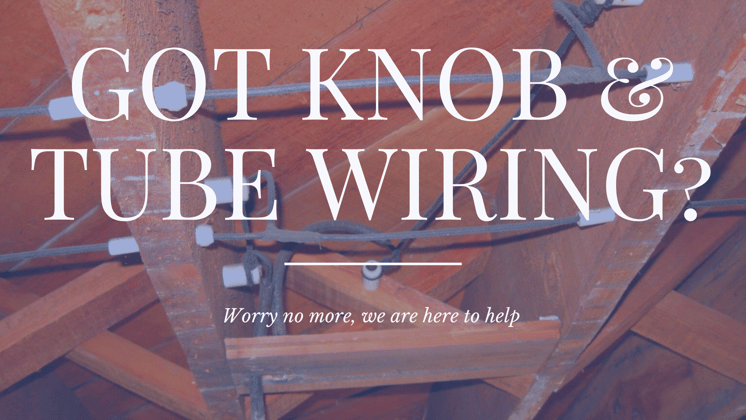
We are in a great market to sell a house at the moment due to low inventory, so many are considering selling their home. So you've put it on the market and found a buyer and then the inspection came and you probably didn't expect any issues, but they found knob and tube wiring in your home and are saying that it has to be remedied. Maybe they even tell you that many electricians don't know how to handle it and you need to find one that can. Well before you start to worry let us explain to you what this wiring is, why they want it fixed, and then we can point you in the direction of getting it fixed.
We will start with a bit of history, knob and tube wiring is an early standard method of electrical wiring in buildings, in common use in North America from about 1880 to the 1960s, which means it was pretty common in the Annapolis area. It looks like a series of knob and tubes connected by wires as the name would suggest and it looks like this: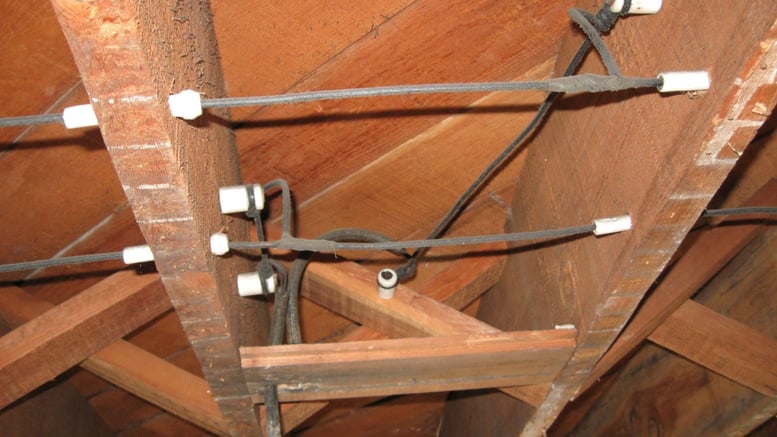
It consisted of single-insulated copper conductors run within wall or ceiling cavities, passing through joist and stud drill-holes via protective porcelain insulating tubes, and supported along their length on nailed-down porcelain knob insulators. Where conductors entered a wiring device such as a lamp or switch, or were pulled into a wall, they were protected by flexible cloth insulating sleeving called loom. The first insulation was asphalt-saturated cotton cloth, then rubber became common. Wire splices in such installations were twisted together for good mechanical strength, then soldered and wrapped with rubber insulating tape and friction tape (asphalt saturated cloth), or made inside metal junction boxes.
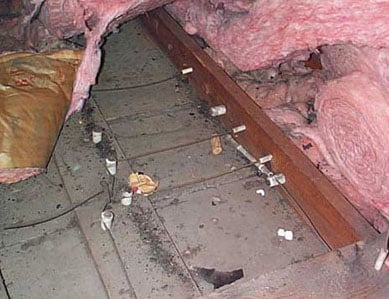 Maybe you are wondering why it needs to be replaced, after all it may not have caused you any issues, well currently building codes have made this wiring standard obsolete not only because there is a better way to do it but, because it can actually be quiet dangerous. One of the main differences between modern wiring and the old knob and tube, is that there is no ground wire. Therefore, this type of wiring cannot accommodate any electrical items with three pronged plugs, and the risk of shocks and fire is much greater. Another issue is modern wiring is insulated with plastic, while knob-and-tube uses rubber. The breakdown of the insulation over time on knob-and-tube wiring is often the reason it is replaced. It’s important to note that this is frequently the result of overheating or mechanical abuse. But more dangerous is the potential of what could happen in your bathroom outlets. Knob and tube is not rated for use in moist environments. This makes knob and tube exceedingly dangerous when used in wet areas, such as kitchens, bathrooms, laundry and utility rooms, and outdoors. And if that wasn't enough it was designed to allow heat from the wires to naturally dissipate. Unfortunately with insulation (especially spray insulation) being very common these day, these wires become a serious fire hazard because when you put insulation around them they can't release heat properly and end up getting overheated and causing a fire.
Maybe you are wondering why it needs to be replaced, after all it may not have caused you any issues, well currently building codes have made this wiring standard obsolete not only because there is a better way to do it but, because it can actually be quiet dangerous. One of the main differences between modern wiring and the old knob and tube, is that there is no ground wire. Therefore, this type of wiring cannot accommodate any electrical items with three pronged plugs, and the risk of shocks and fire is much greater. Another issue is modern wiring is insulated with plastic, while knob-and-tube uses rubber. The breakdown of the insulation over time on knob-and-tube wiring is often the reason it is replaced. It’s important to note that this is frequently the result of overheating or mechanical abuse. But more dangerous is the potential of what could happen in your bathroom outlets. Knob and tube is not rated for use in moist environments. This makes knob and tube exceedingly dangerous when used in wet areas, such as kitchens, bathrooms, laundry and utility rooms, and outdoors. And if that wasn't enough it was designed to allow heat from the wires to naturally dissipate. Unfortunately with insulation (especially spray insulation) being very common these day, these wires become a serious fire hazard because when you put insulation around them they can't release heat properly and end up getting overheated and causing a fire.
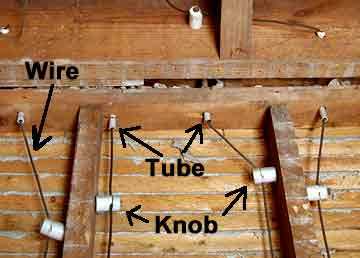 If you have looked up current building code you are likely thinking "But wait, I looked up building code for Maryland and it doesn't say this needs to be replaced." And you are correct but, if you are trying to remodel, renovate, or add an addition onto your home or sell it you will run into issues. Building code for Maryland does say that you can not use knob and tube in a remodel, renovation, or addition and that if you want to do that to you home you must also replace the knob and tube wiring. However the reason it likely caused an issue during the sale of your home is because it was flagged as a home insurance issue for the buyer by their inspector. The fact is that many home insurance companies will flag a home for having knob and tube wiring and refuse to insure the home because of it. This means you will likely have to replace the wiring in order to sell the home because the future home owner needs to carry homeowners insurance.
If you have looked up current building code you are likely thinking "But wait, I looked up building code for Maryland and it doesn't say this needs to be replaced." And you are correct but, if you are trying to remodel, renovate, or add an addition onto your home or sell it you will run into issues. Building code for Maryland does say that you can not use knob and tube in a remodel, renovation, or addition and that if you want to do that to you home you must also replace the knob and tube wiring. However the reason it likely caused an issue during the sale of your home is because it was flagged as a home insurance issue for the buyer by their inspector. The fact is that many home insurance companies will flag a home for having knob and tube wiring and refuse to insure the home because of it. This means you will likely have to replace the wiring in order to sell the home because the future home owner needs to carry homeowners insurance.
Ok so you have been told the wiring needs to be replaced so while all this information is great you are probably more interested in what is this going to cost you and how do you go about getting it done and by who.
What does knob and tube replacement/remediation cost in Maryland?
Well over the years the price of this has changed a ton and there are many things to take into account, like the size of the house. But as a ballpark figure you could be looking at $8,0000-$20,000.
What do you do to get knob and tube wiring replaced?
You need to call a licensed master electrician and have them confirm that they are trained in the remediation of knob and tube wiring (not all are) and have them come out and give you an estimate on the cost for your house.
Fortunately, Chesapeake Electric is up for the challenge! Our experienced team is led by a Master Electrician whose thoroughness and knowledge of knob and tube remediation provides the perfect solution to your wiring problems. Our licensed and insured electricians have over 10 years of experience dealing with this outdated wiring method, so you can count on us to provide you with the professional services you need to completely overhaul your system. We take a great deal of pride in the quality of our work and our dedication to complete customer satisfaction, so give us a call today for a complimentary in-home estimate!
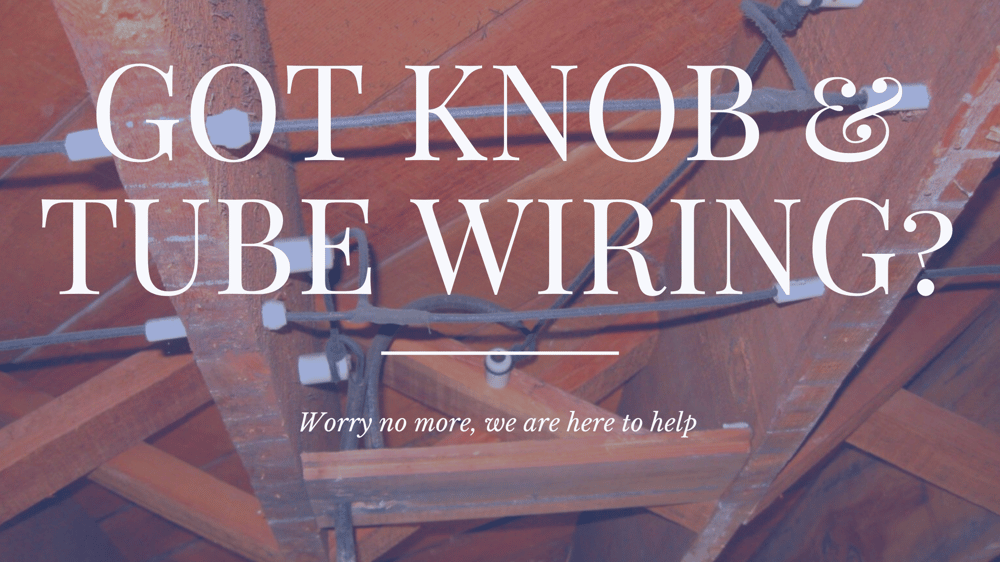
Lauren is a wife, mother of 3 (2 adorable furbabies and a handsome toddler), and a marketing enthusiast. She is a bit of a DIYer but knows to hire the right people when it comes to plumbing or electrical work. She enjoys binge watching bad TV, camping, wine tasting, and shopping on Amazon more than her husband prefers. Lauren joined the Chesapeake Electric team in March 2021 after spending 10 years with a marketing agency.
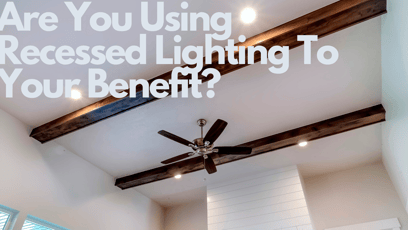
Recessed lighting is lighting that is installed directly inside a ceiling, wall, or other surface....

If I were to tell you that smoke and carbon monoxide detectors are mandatory in every residence and...
Leave a Comment